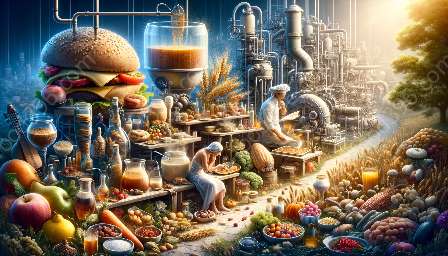Food storage and transportation have evolved significantly over the centuries, driven by the continuous innovation and advancement in food technology. This article explores the developments, their impact on food culture and history, and their compatibility with the evolving food technology and innovation.
Evolution of Food Technology and Innovation
Throughout history, the methods of food storage and transportation have played a crucial role in the evolution of food technology. Early civilizations used natural methods such as drying, smoking, and fermentation to preserve food. This laid the foundation for food preservation techniques that are still prevalent today. In the modern era, technology has revolutionized food storage and transportation, with the use of refrigeration, vacuum sealing, and modified atmosphere packaging, allowing perishable foods to be transported over long distances while maintaining their quality and freshness.
The development of food technology has also led to innovations in packaging materials, enabling the creation of lightweight, durable, and sustainable packaging solutions. Furthermore, advancements in cold chain logistics and transportation have improved the efficiency and safety of food distribution, reducing food waste and ensuring a secure supply chain.
Impact on Food Culture and History
The advances in food storage and transportation have significantly impacted food culture and history. In ancient times, the ability to preserve food allowed civilizations to store surplus harvests, enabling them to thrive during times of scarcity. This influenced the development of cultural food preservation techniques, such as pickling, salting, and curing, which are integral to the culinary traditions of many societies.
As global trade expanded, the exchange of foodstuffs between different regions became possible, transforming culinary practices and enriching food cultures around the world. The preservation and transportation of exotic spices, fruits, and other perishable goods became feasible, leading to the fusion of diverse flavors and ingredients in various cuisines.
Furthermore, the evolution of food storage and transportation has had a profound impact on the industrialization of food production, allowing for mass-scale distribution and the emergence of convenience foods. This has reshaped dietary habits and consumption patterns, reflecting the symbiotic relationship between technological advancements and cultural evolution.
Compatibility with Food Technology and Innovation
The advancements in food storage and transportation are closely intertwined with the continuous innovation in food technology. The development of refrigeration, controlled atmosphere storage, and transportation systems has necessitated the integration of sophisticated monitoring and control technologies to ensure food safety and quality. This convergence of technologies has paved the way for smart storage and transport solutions, incorporating IoT sensors, real-time tracking, and data analytics to optimize supply chain management.
Moreover, the demand for sustainable and environmentally friendly practices has spurred the development of eco-friendly packaging materials and energy-efficient refrigeration systems, aligning with the broader trend of sustainable food technology. Innovations in cold chain logistics, including the use of alternative fuels and autonomous vehicles, are reshaping the landscape of food transportation, addressing concerns related to carbon emissions and transportation efficiency.
In Conclusion
The advances in food storage and transportation have been instrumental in shaping the evolution of food technology and innovation, while profoundly influencing food culture and history. From ancient preservation techniques to modern cold chain logistics and smart storage solutions, the continuous progress in this field reflects the ongoing quest to ensure food security, reduce food waste, and enhance the global accessibility of diverse food products.

